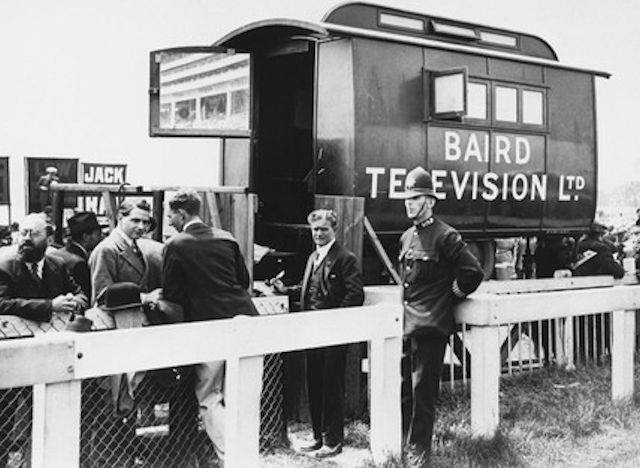
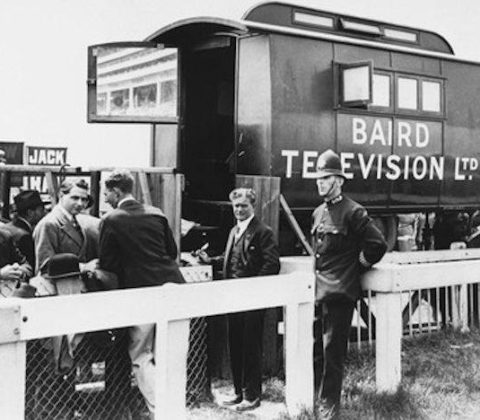
The World’s First Four Television Mobile Units…1931 Through 1937
The World’s First Four Television Mobile Units…1931 Through 1937
Thanks to a note from friend, camera collector and author Dicky Howett in the UK, I need to clarify a bit of early TV history regrading the first mobile units, and in this revision, include the just discovered Berlin Olympics unit.
Although RCA’s new twin Tele Mobile unit delivery to NBC on December 12, 1937 was a first in The Americas, it was not a “world’s first” event. It was more like a world’s fourth event!
It all began in 1931, when John Logie Baird did a 30 line, mechanical remote broadcast from the Epsom Derby. The first photo here shows that first mobile unit, and at this link is a detailed description of the event. https://eehe.org.uk/?p=28911
Next in time; August 1st through 16th 1936. The Summer Olympic Games were held in Berlin, and although the five electronic television cameras* there were handled by a control room in the stadium with direct lines to the transmitter, we have just learned that there was indeed a television mobile unit there. A very unique one which you can see outside the Olympic stadium and in the diagram.
The German unit was not what you would call a classic example, as it was not equipped to handle live action cameras, but it was a television remote unit…an “intermediate film” television apparatus.
It works this way…a normal cinema camera, mounted on a transport van, initially records the footage on film, which is sent down the camera’s light tight pedestal into the van. There, the film is immediately developed inside the van and then run through a flying spot scanner camera (so called because it moved a focused beam of light back and forth across the image), and electronically converted from a negative to a positive television image. Scenes from the just developed film could be broadcast with a delay of about a minute.
At this link, you can see the Telefunken cameras and the Berlin van, with an animated diagram of how it works.
John Logie Baird began developing the process in 1932, borrowing the idea of Georg Oskar Schubert from his licensees in Germany, where it was demonstrated by Fernseh AG in 1932 and used for broadcasting in 1934.
The BBC used Baird’s version of the process during the first three months of its then, “high-definition” television service from November 1936 through January 1937, and German television used it during broadcasts of the 1936 Summer Olympics. In both cases, intermediate film cameras alternated with newly introduced direct television cameras.
Television tubes developed by Farnsworth and Zworykin in the United States, and by EMI in England, with much higher sensitivity to light, made the intermediate film system obsolete by 1937.
Next in service was the BBC’s Marconi-EMI unit. The other photos here show the three bus BBC OB (Outside Broadcast) unit. It was first used at the Coronation of King George VI on May 12, 1937. Stationed along the parade route, the three EMI Emitron cameras (similar to Iconoscope) were able to get very good images as the King passed.
The three bus unit consisted of a mobile control room, a transmitter unit and a generator unit in case there was no available power supply. The OB unit was next used to televise the Wimbledon Tennis matches from June 21-July 2, 1937.
This was just about the time RCA was beginning to outfit their NBC Tele Mobile units for NBC. So, although they weren’t the first, they were certainly the most used. NBC pressed them into service at everything from boxing and racing events to football and baseball games, and daily duty at the 1939 World’s Fair.
As that event in America was kicking off and celebrating the coming of electronic TV here, the BBC’s television operation was contemplating shutting down out of fear that their signals could be used by the Germans as navigation and targeting aids, as the war in Europe drew nearer.
On September 1, 1939 they ceased all operations. The BBC Television Service remained dormant until Saturday 7 June, 1946.
*Above I mentioned the 5 cameras in Berlin and to be clear, there was the intermediate film camera in the van, three huge Telefunken cameras using Iconoscope technology, and an experimental Fernseh camera using the Farnsworth Image Dissector tube technology. -Bobby Ellerbee
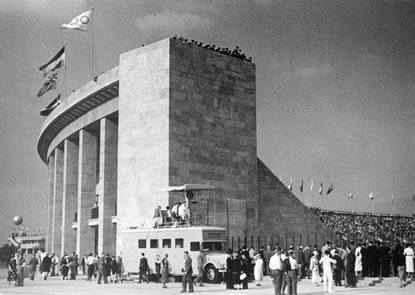
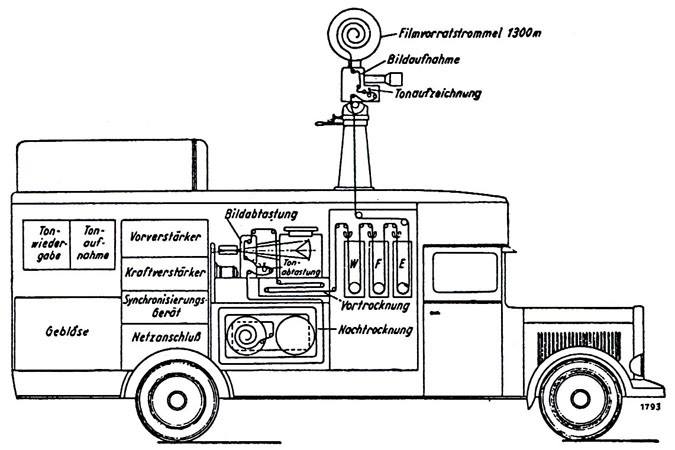 Above is the German unit from the 1936 Olympics and below the Marconi-EMI units of the BBC
Above is the German unit from the 1936 Olympics and below the Marconi-EMI units of the BBC

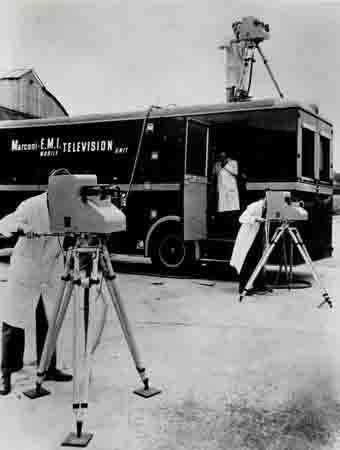
more here: http://hka-online.de/maschi/maschi001.html